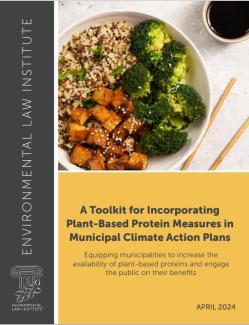Cities around the country are grappling with the current and future effects of climate change—a task more daunting given recent estimates that global warming is likely to exceed international targets. In a cover story entitled “Goodbye 1.5°C,” The Economist magazine calls for “greater efforts” to adapt to climate change, emphasizing that preparing for the increased “calamities” the world now faces is a “matter of life and death.”
Fortunately, unprecedented subsidies in the Infrastructure Investment and Jobs Act and Inflation Reduction Act provide a much-needed funding boost for cities’ ongoing adaptation efforts. Ballotpedia data indicate, however, that blue cities are more likely to adopt climate action plans than red cities. In 2022, for example, 35 of the country’s 50 largest cities had climate actions plans—including only three of the roughly one dozen cities led by Republican mayors.
Nevertheless, according to the C40 Climate Leadership Group, “health, societal and economic benefits” make climate adaptation valuable for all cities. For example, in addition to saving lives, “it is cheaper and far less disruptive” to spend on adaptation than on disaster relief and recovery. And the potential for “unmitigated disaster events” can deter investments and lead to lost economic growth opportunities. Furthermore, failure to prepare for climate change may negatively affect a city’s credit rating.
For those cities that already are making progress, University of Michigan post-doctoral fellow Ben Leffel says his research indicates that their success may be “driven by participation in global networks, such as ICLEI—Local Governments for Sustainability, C40 Cities, and the Global Covenant of Mayors for Climate and Energy, as well as proximity to environmental management consultancies—all of which facilitate key technical expertise transmission on climate solutions.”
GCoM and its partner organizations, in particular, have an outsized influence on local adaptation efforts. Cities that participate in GCoM, a voluntary alliance of over 12,000 cities worldwide, pledge to implement measures that reduce greenhouse gas emissions, prepare for climate change impacts, and increase access to sustainable energy.
GCoM’s Common Reporting Framework provides a roadmap that includes mandatory as well as recommended and optional provisions for pledge compliance. GCoM partner organizations, including ICELI and C40, provide technical guidance and resources.
Adaptation plans can be separate or integrated with mitigation plans and must include a description of stakeholder engagement processes. Cities also are required to monitor, track, and report every two years on plan implementation.
To develop adaptation plans, cities engage in a series of steps that start with a Climate Risk and Vulnerability Assessment in which such hazards and impacts are identified. Common climate hazards include water scarcity, wildfires, and severe wind. Impacts are defined broadly to include effects on both communities and natural systems.
For each hazard identified, a city is required to report the current risk level, expected future impacts, expected intensity frequency and timescale, and which sectors, assets, or services could be the most affected. GCoM also recommends, for purposes of prioritizing adaptation actions, that cities provide information on vulnerable population groups expected to be most affected.
In addition, GCoM tasks cities with assessing their adaptive capacity—the degree to which they can adequately respond to impacts and “even leverage the new climate conditions to yield opportunities.” The framework sets out factors, such as infrastructure conditions and resource availability, for cities to consider in identifying adaptive capacity challenges.
Next up, cities develop goals and strategies to address climate impacts, current and future. In so doing, C40 advises cities to consider the root causes of each risk, including physical characteristics such as lack of vegetation that contributes to urban heat islands.
After completing these foundational steps, cities focus on selecting adaptation actions. C40 recommends a mix of several types of actions: reactive (addressing immediate hazards such as purchasing water during droughts), preventative (reducing negative consequences of hazards such as building flood walls), and transformative (instituting fundamental changes such as updating building codes).
Although numerous criteria can be used to assess potential actions, a GCoM support tool suggests that cities should aim for win-win actions that minimize climate risks but also make a “significant contribution to another social, environmental, or economic goal.” In the alternative, cities should at least pick no-regrets adaptation options—those that are “worthwhile whatever the extent of future climate change will be.

